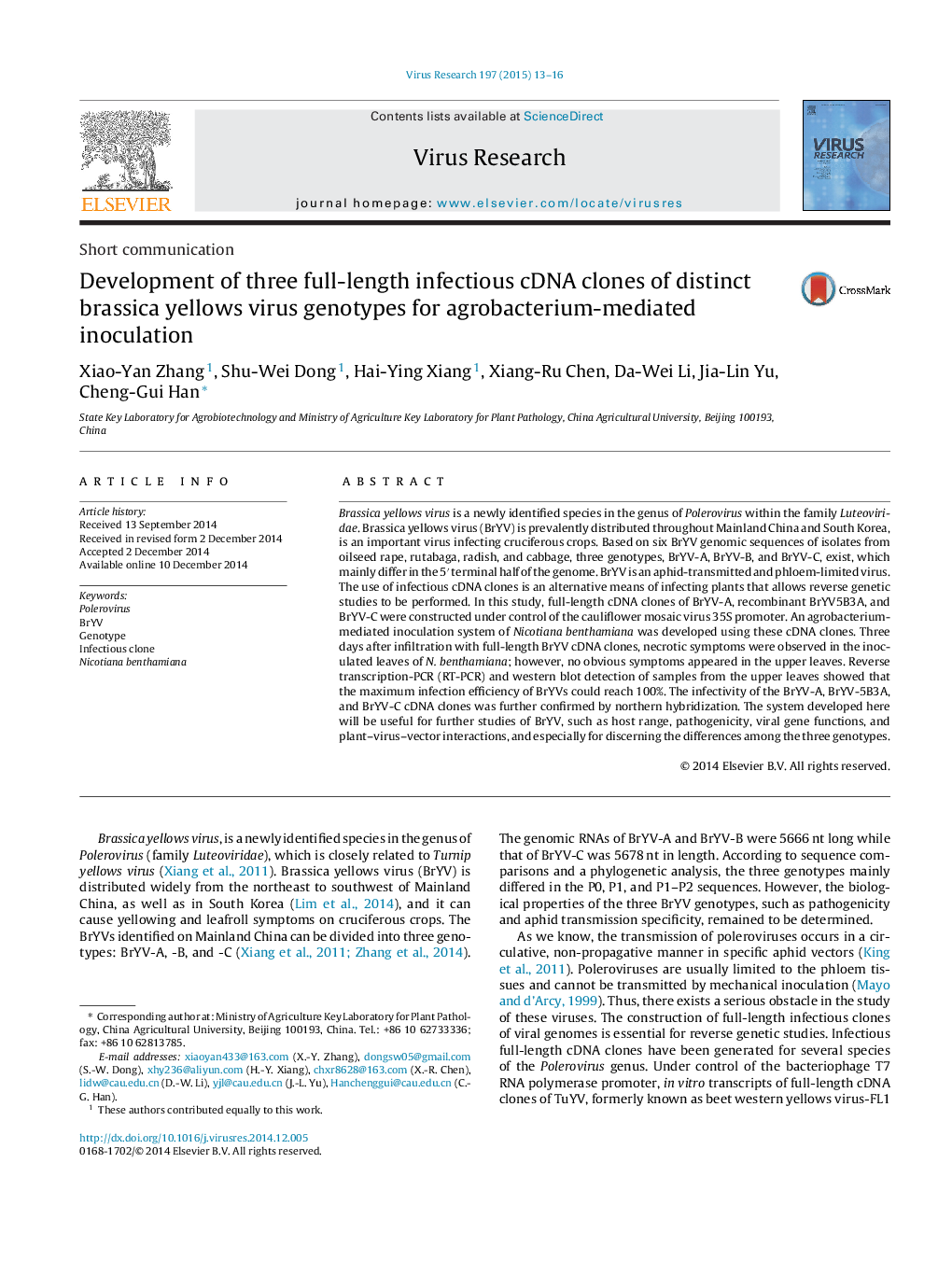| Article ID | Journal | Published Year | Pages | File Type |
|---|---|---|---|---|
| 3428294 | Virus Research | 2015 | 4 Pages |
•Full-length cDNA clones of three brassica yellows virus genotypes were constructed.•BrYV full-length infectious cDNA clones were used for agro-inoculation.•BrYV-A and BrYV-C infectious clones can systemically infect Nicotiana benthamiana.•Recombinant BrYV-5B3A of BrYV-A and BrYV-B can systemically infect N. benthamiana.•Mixed infection with BrYV-A, BrYV-5B3A and BrYV-C is possible in N. benthamiana.
Brassica yellows virus is a newly identified species in the genus of Polerovirus within the family Luteoviridae. Brassica yellows virus (BrYV) is prevalently distributed throughout Mainland China and South Korea, is an important virus infecting cruciferous crops. Based on six BrYV genomic sequences of isolates from oilseed rape, rutabaga, radish, and cabbage, three genotypes, BrYV-A, BrYV-B, and BrYV-C, exist, which mainly differ in the 5′ terminal half of the genome. BrYV is an aphid-transmitted and phloem-limited virus. The use of infectious cDNA clones is an alternative means of infecting plants that allows reverse genetic studies to be performed. In this study, full-length cDNA clones of BrYV-A, recombinant BrYV5B3A, and BrYV-C were constructed under control of the cauliflower mosaic virus 35S promoter. An agrobacterium-mediated inoculation system of Nicotiana benthamiana was developed using these cDNA clones. Three days after infiltration with full-length BrYV cDNA clones, necrotic symptoms were observed in the inoculated leaves of N. benthamiana; however, no obvious symptoms appeared in the upper leaves. Reverse transcription-PCR (RT-PCR) and western blot detection of samples from the upper leaves showed that the maximum infection efficiency of BrYVs could reach 100%. The infectivity of the BrYV-A, BrYV-5B3A, and BrYV-C cDNA clones was further confirmed by northern hybridization. The system developed here will be useful for further studies of BrYV, such as host range, pathogenicity, viral gene functions, and plant–virus–vector interactions, and especially for discerning the differences among the three genotypes.
